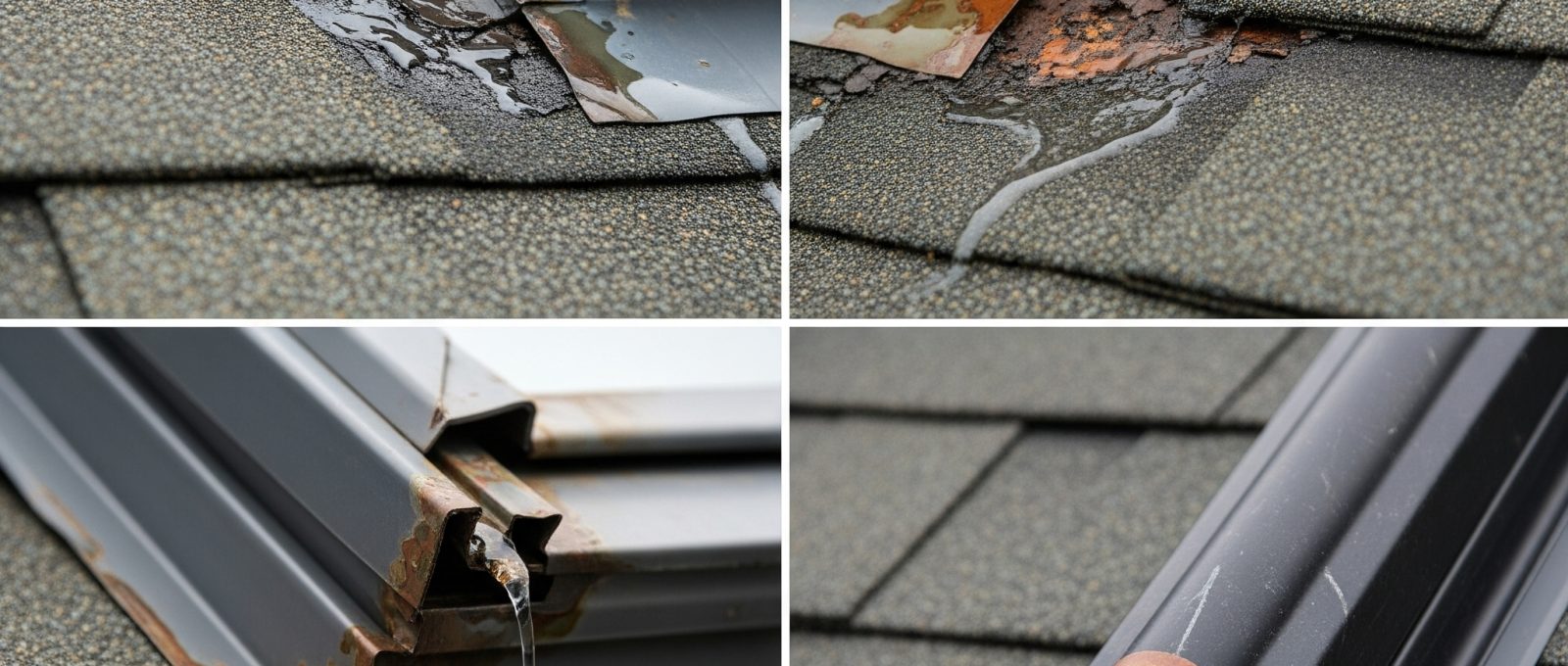Roof Flashing New Jersey – When most homeowners think about roof leaks, they often imagine missing shingles or a hole in the roof. But in reality, one of the most common causes of roof leaks is roof flashing failure—a small component with a major job.
At All Pro 1 New Jersey, we’ve helped countless property owners identify and fix roof flashing problems before they lead to costly interior damage. In this post, we’ll break down what flashing is, why it fails, how to spot the warning signs, and what New Jersey homeowners need to do to stay protected year-round.
📞 Need a flashing inspection or roof repair? Call us at (201) 773-6635 or request a free estimate online.
What Is Roof Flashing?
Roof flashing is a thin material—usually metal—that is installed at key joints, edges, and penetrations in a roof to direct water away from seams and openings. Flashing plays a critical role in waterproofing your home by sealing off vulnerable areas where water could otherwise seep in.
Flashing is commonly found around:
-
Chimneys
-
Skylights
-
Roof valleys
-
Vents and pipes
-
Dormers
-
Where the roof meets vertical walls
Without properly installed flashing, even the most durable roof will eventually develop leaks.Roof Flashing New Jersey
Common Types of Roof Flashing
There are several types of flashing used on a typical New Jersey roof:
1. Step Flashing
Used where the roof meets a vertical wall (like side dormers). Step flashing overlaps each shingle layer and runs up the wall to create a watertight seal.
2. Chimney Flashing
Flashing around the base of a chimney usually includes both step flashing and counter flashing to prevent leaks where masonry meets shingles.
3. Valley FlashingRoof Flashing New Jersey
Installed in roof valleys—where two slopes meet—to channel rainwater safely off the roof.
4. Vent Pipe Flashing
Covers and seals around plumbing vents and exhaust stacks that penetrate the roof.Roof Flashing New Jersey
5. Drip Edge Flashing
Installed along roof edges to guide water away from fascia and into the gutters.Roof Flashing New Jersey
Why Flashing Fails Over Time
Even high-quality flashing materials can fail—especially in New Jersey’s unpredictable weather. Some of the most common causes include:
Improper Installation
If flashing isn’t installed correctly or sealed properly during your last roof job, it’s only a matter of time before water finds its way in.Roof Flashing New Jersey
Corrosion and Rust
Over the years, metal flashing can rust, corrode, or degrade—especially in coastal areas of New Jersey where salt air accelerates deterioration.
Sealant Failure
Flashing is often sealed with roofing cement or caulk. These materials can dry out, crack, or separate from surfaces due to UV exposure and weather extremes.
Roof Movement
As temperatures rise and fall, your roof expands and contracts. This movement can pull flashing out of place or cause cracks in the sealant.
Aging and Wear
Just like shingles, flashing doesn’t last forever. If your roof is 15–20+ years old, the flashing may already be compromised.
Signs That Your Roof Flashing Is Failing
Flashing problems are often silent—until water damage becomes visible. Watch for these early warning signs:
-
Water stains on ceilings or walls
-
Peeling paint or bubbling drywall
-
Mold or mildew in the attic
-
Leaks around chimneys, vents, or skylights
-
Visible rusted or loose flashing
-
Debris collecting in roof valleys
Because flashing is often hidden beneath shingles or siding, it’s easy to overlook—but the consequences of neglecting it can be expensive.
Why New Jersey Homes Are Especially at Risk
New Jersey’s weather puts unique pressure on flashing systems:
-
Heavy rainfall and snow test the watertight integrity of flashing
-
Freeze-thaw cycles can loosen fasteners and crack sealants
-
Strong winds can lift or dislodge flashing
-
Salt air near the Jersey Shore corrodes flashing faster than inland areas
That’s why routine inspections and maintenance are critical for homes throughout the state.
The Cost of Ignoring Flashing Issues
Let’s compare the cost of proactive flashing repair vs. what happens if the issue is ignored:
| Problem | Cost if Caught Early | Cost if Ignored |
|---|---|---|
| Chimney flashing reseal | $200–$400 | $3,000+ (interior water damage) |
| Valley flashing replacement | $300–$600 | $5,000+ (deck rot, mold remediation) |
| Pipe boot repair | $150 | $2,000+ (attic leaks, ceiling repair) |
Taking action early saves you thousands—and helps protect your roof investment.
How All Pro 1 New Jersey Can Help
Our team specializes in flashings and leak prevention, offering:
Free roof inspections with a focus on flashing trouble spots
Replacement or resealing of damaged flashing
Full roof replacements that include modern flashing systems
Emergency leak repair services
Warrantied, code-compliant installations
We work with all major flashing materials, including aluminum, copper, and galvanized steel—and we ensure everything is sealed to handle New Jersey’s harshest weather.
📞 Call (201) 773-6635 or click here to book your free estimate.
When Should You Have Your Flashing Checked?
We recommend a flashing inspection:
-
Once a year during seasonal roof checkups
-
After a major storm or wind event
-
If your roof is over 10 years old
-
When you notice stains or leaks near roof edges
Even if your shingles look fine, flashing can fail silently—so don’t assume your roof is leak-proof.
Final Thoughts
Roof flashing is small but mighty—it protects your home from costly water damage. Left unchecked, a single piece of failing flashing can compromise your entire roofing system. The good news? These problems are preventable with regular inspections and fast repairs.
Whether you need a flashing tune-up or want peace of mind before the next storm hits, All Pro 1 New Jersey is here to help.
📞 Call us today at (201) 773-6635 or schedule your free inspection now. Protect your roof. Protect your home.

